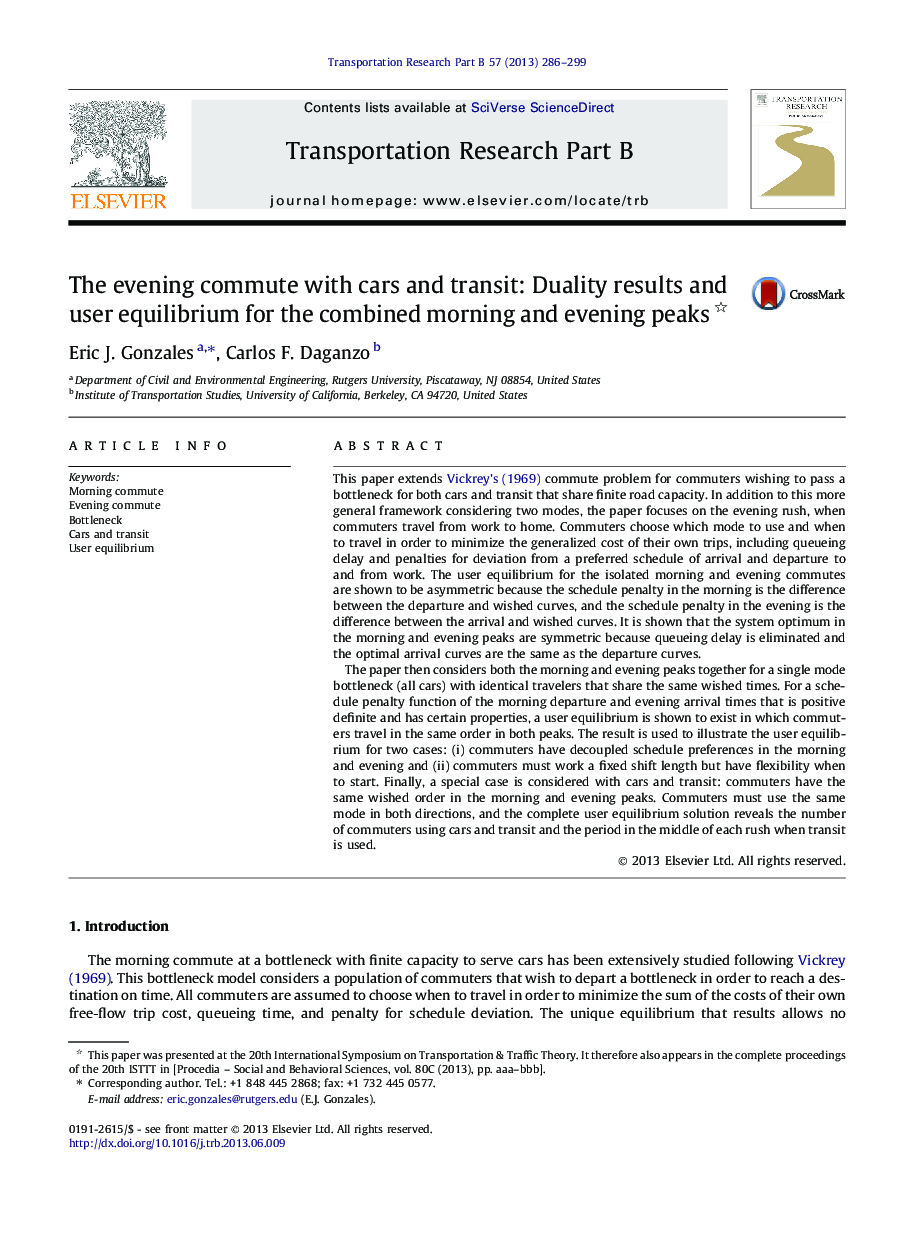| Article ID | Journal | Published Year | Pages | File Type |
|---|---|---|---|---|
| 1131965 | Transportation Research Part B: Methodological | 2013 | 14 Pages |
•Model considers bottleneck congestion with finite capacity for cars and for transit.•User equilibriums for isolated morning and evening commutes are asymmetric.•System optimums and optimal prices for isolated morning and evening are symmetric.•Day-long equilibrium for cars exists for a broad set of realistic schedule penalties.•Day-long equilibrium for cars and transit is shown when wished order is same in am/pm.
This paper extends Vickrey’s (1969) commute problem for commuters wishing to pass a bottleneck for both cars and transit that share finite road capacity. In addition to this more general framework considering two modes, the paper focuses on the evening rush, when commuters travel from work to home. Commuters choose which mode to use and when to travel in order to minimize the generalized cost of their own trips, including queueing delay and penalties for deviation from a preferred schedule of arrival and departure to and from work. The user equilibrium for the isolated morning and evening commutes are shown to be asymmetric because the schedule penalty in the morning is the difference between the departure and wished curves, and the schedule penalty in the evening is the difference between the arrival and wished curves. It is shown that the system optimum in the morning and evening peaks are symmetric because queueing delay is eliminated and the optimal arrival curves are the same as the departure curves.The paper then considers both the morning and evening peaks together for a single mode bottleneck (all cars) with identical travelers that share the same wished times. For a schedule penalty function of the morning departure and evening arrival times that is positive definite and has certain properties, a user equilibrium is shown to exist in which commuters travel in the same order in both peaks. The result is used to illustrate the user equilibrium for two cases: (i) commuters have decoupled schedule preferences in the morning and evening and (ii) commuters must work a fixed shift length but have flexibility when to start. Finally, a special case is considered with cars and transit: commuters have the same wished order in the morning and evening peaks. Commuters must use the same mode in both directions, and the complete user equilibrium solution reveals the number of commuters using cars and transit and the period in the middle of each rush when transit is used.
